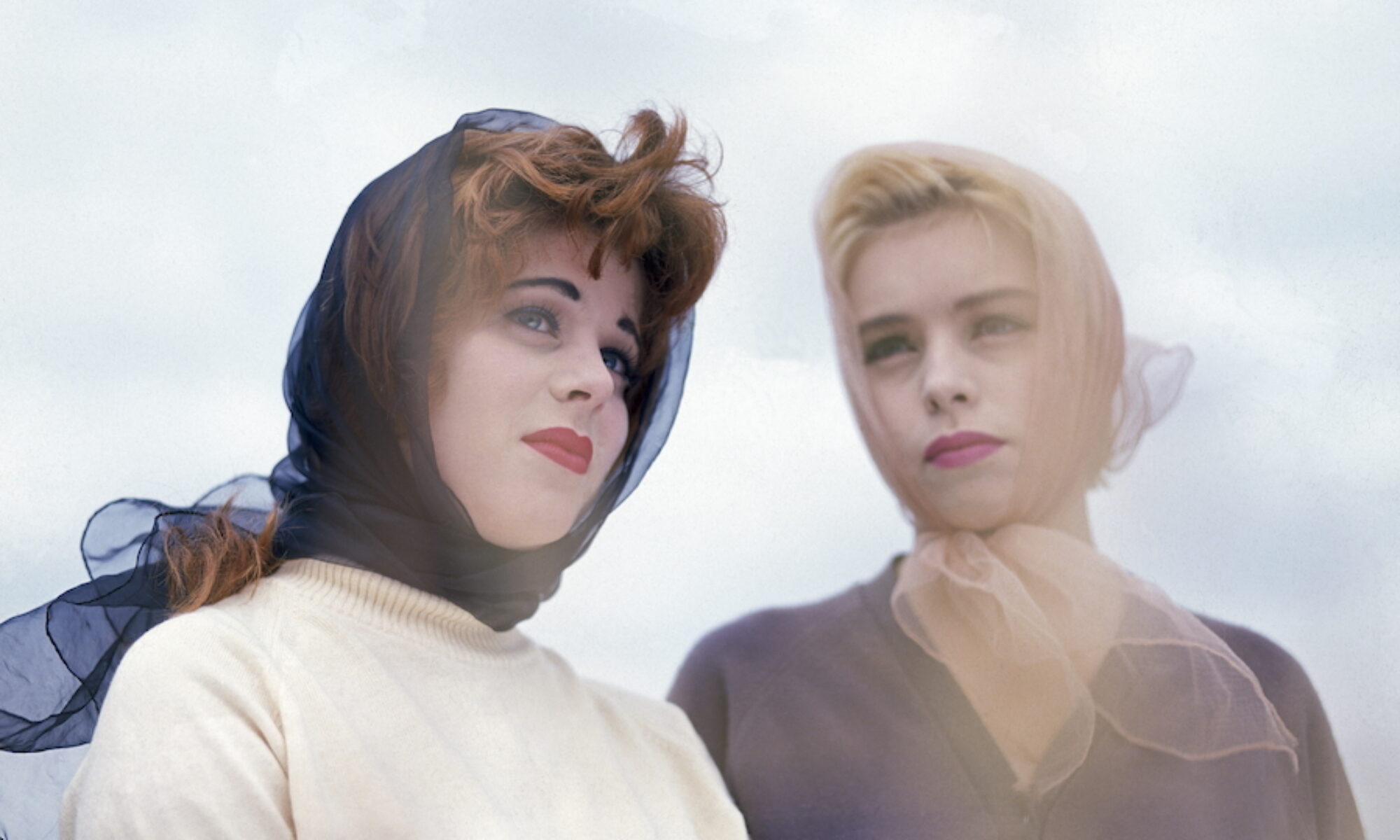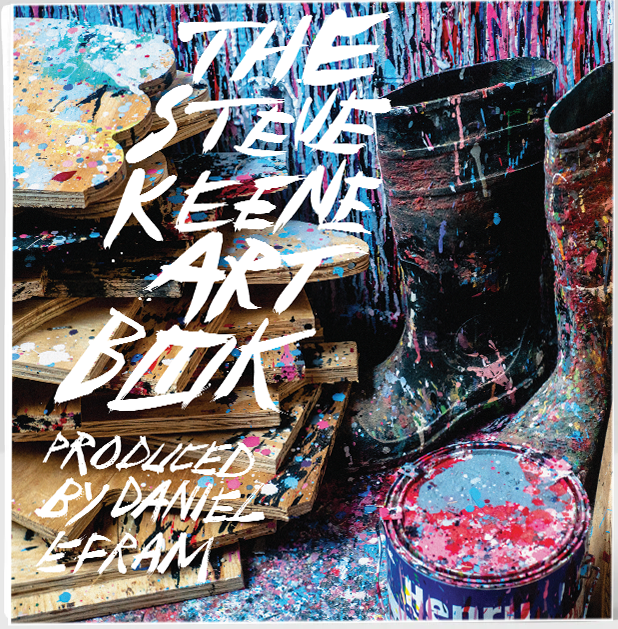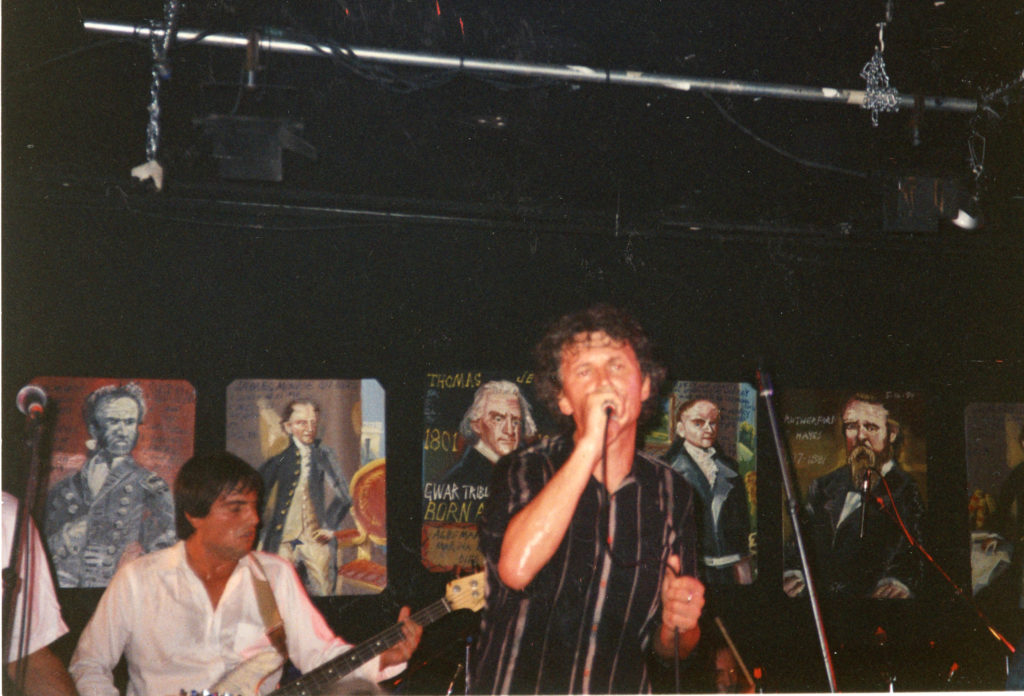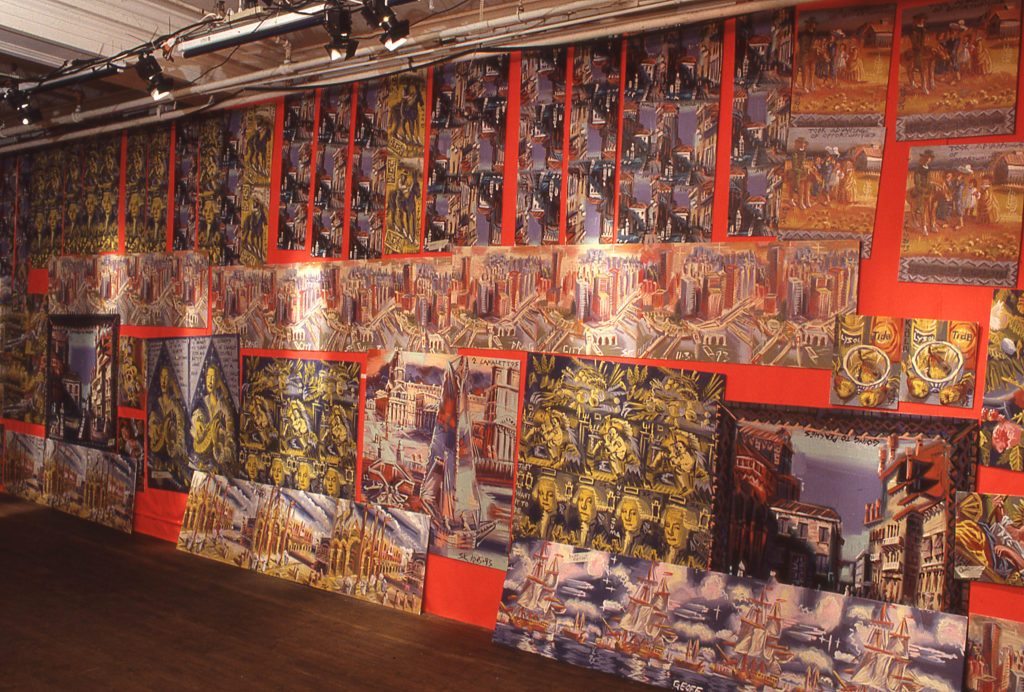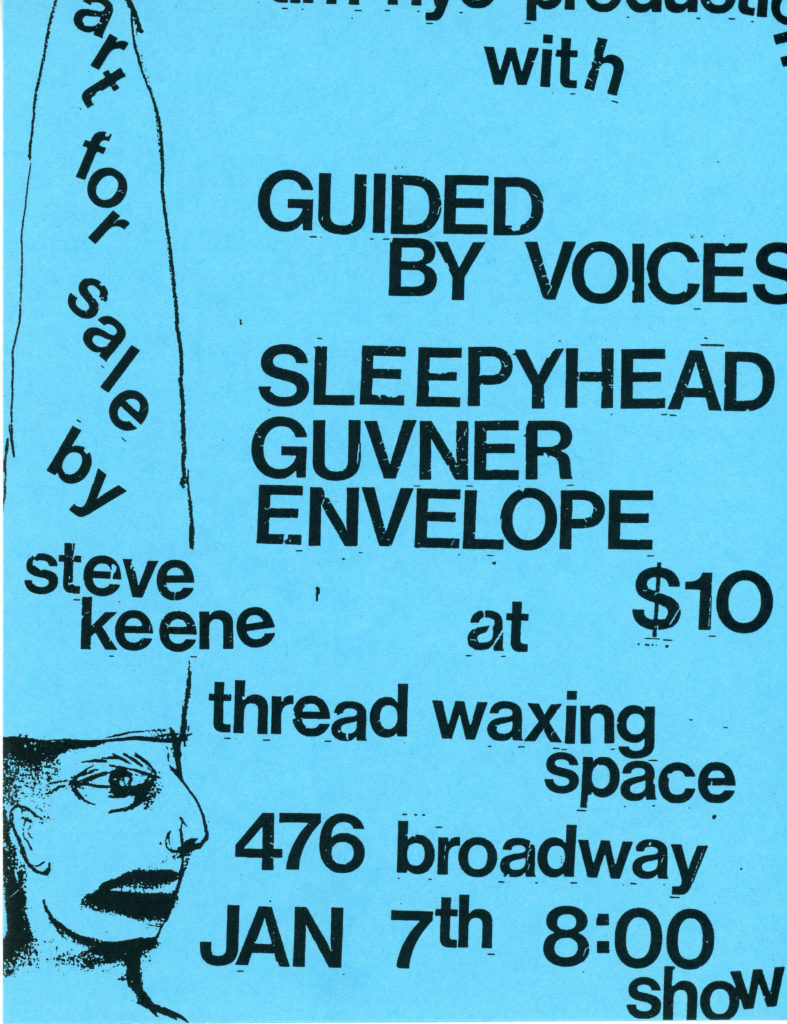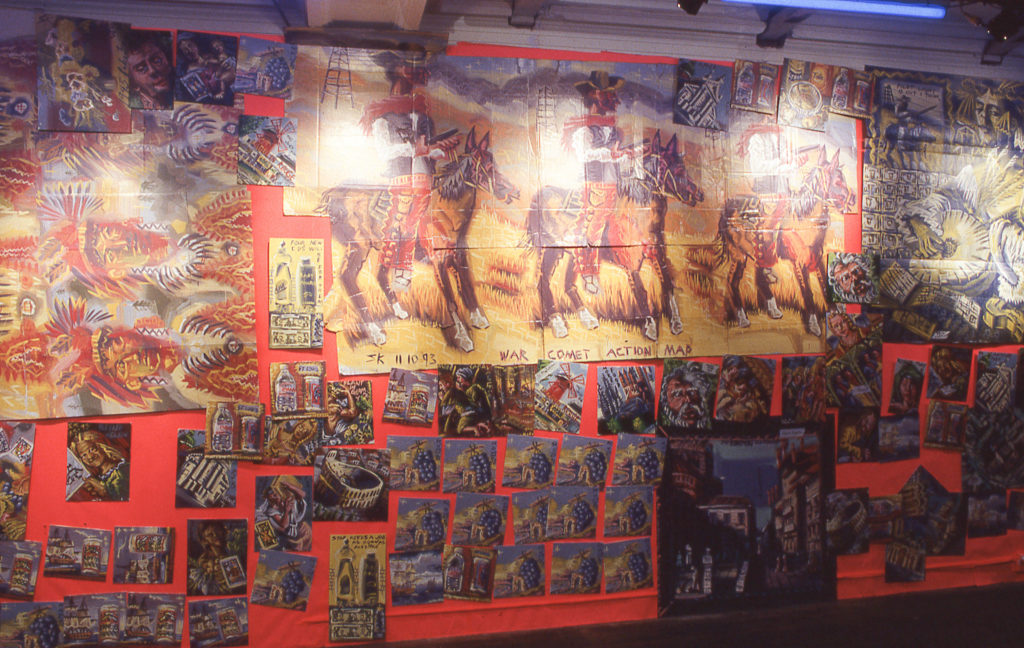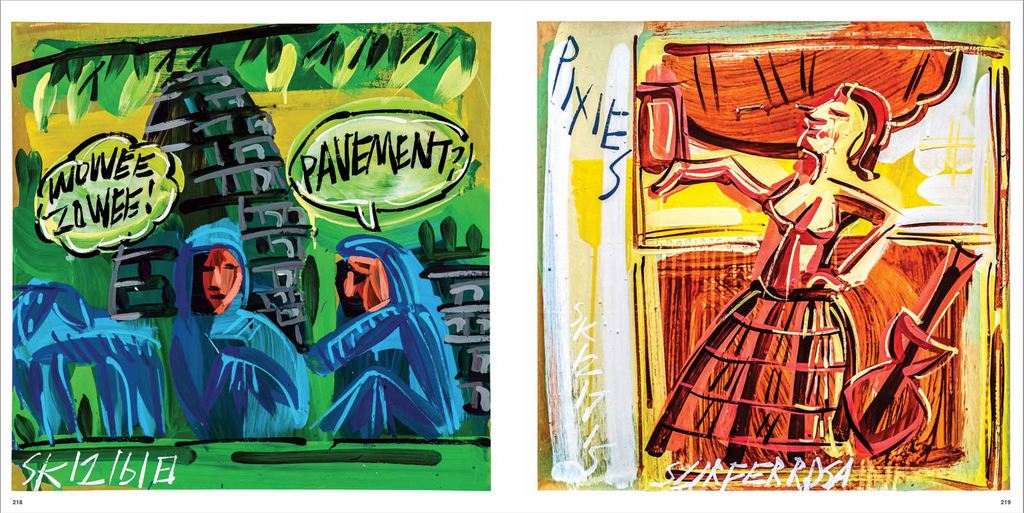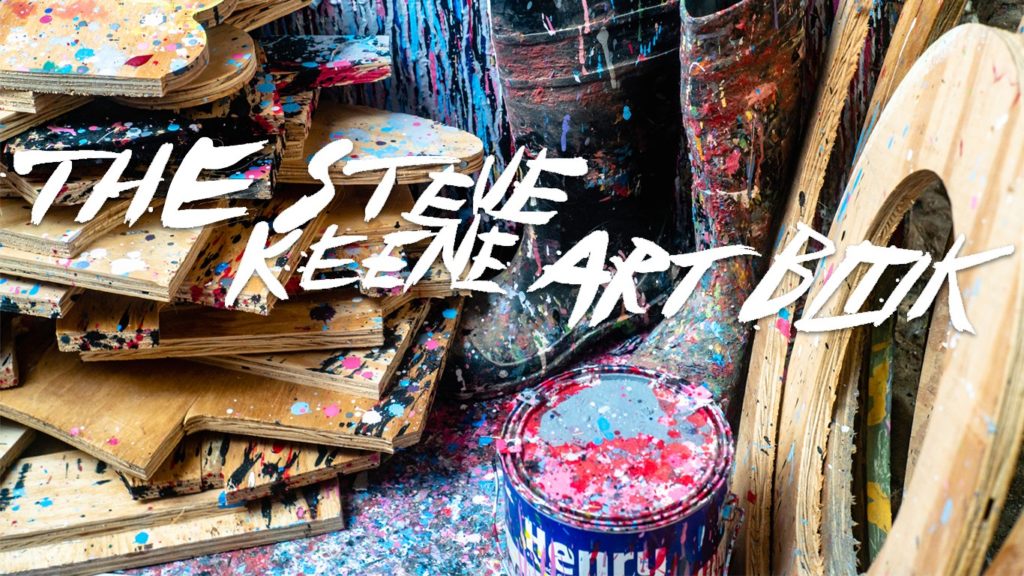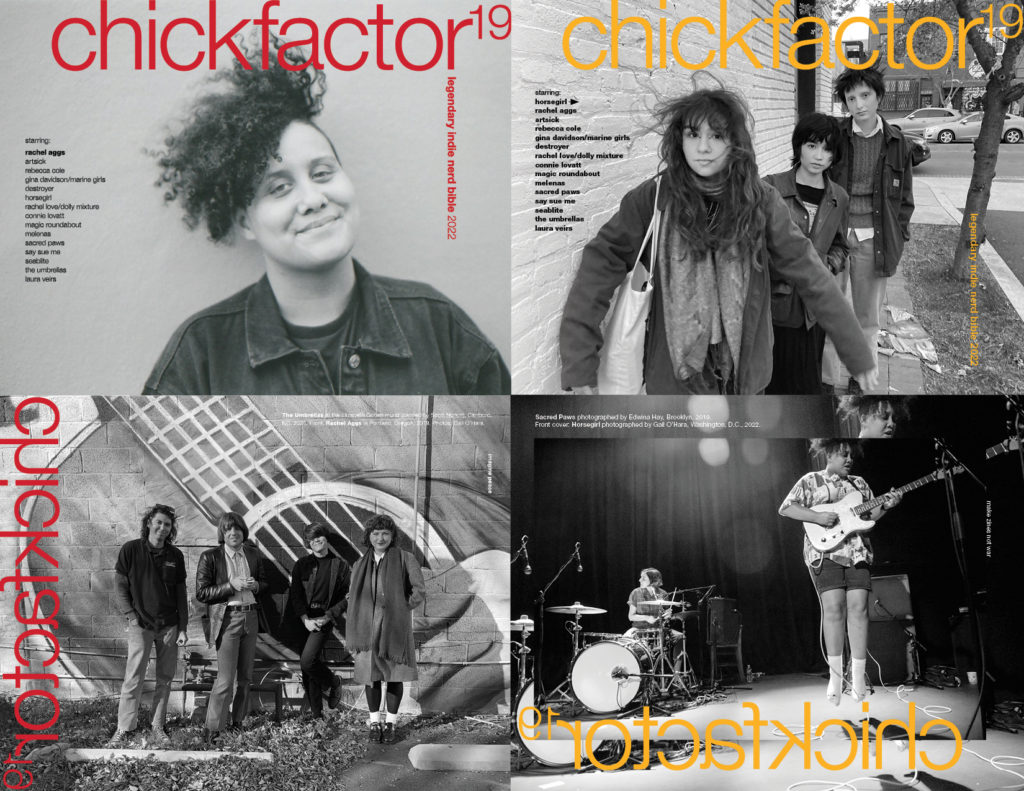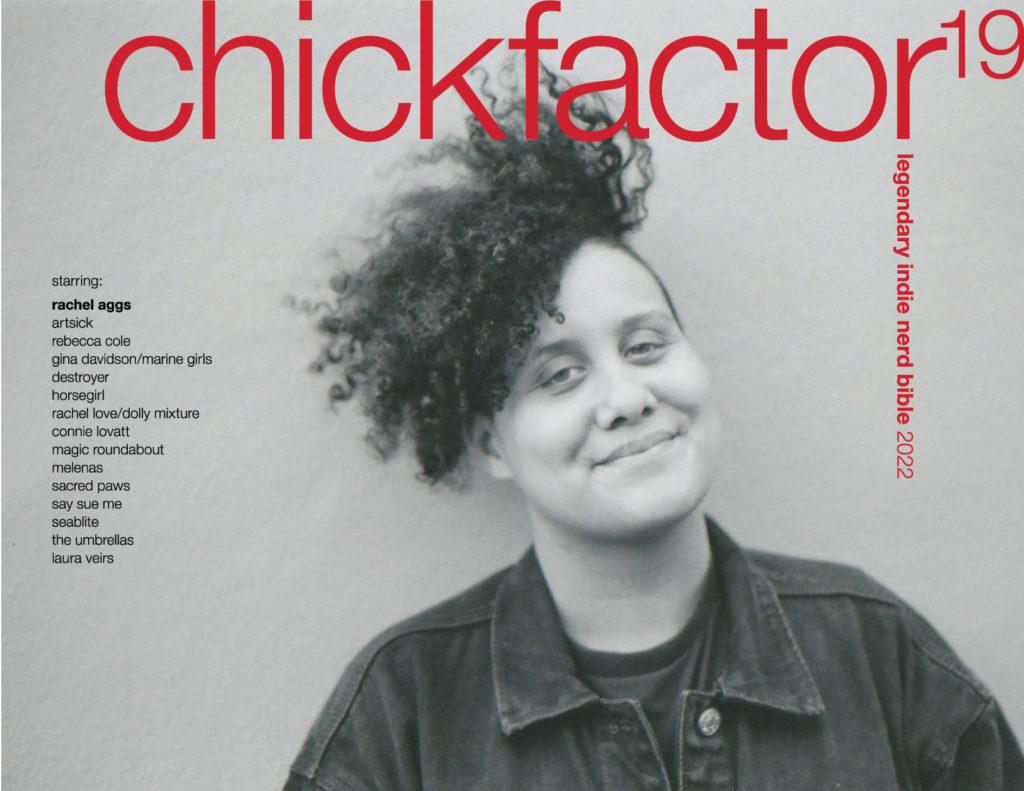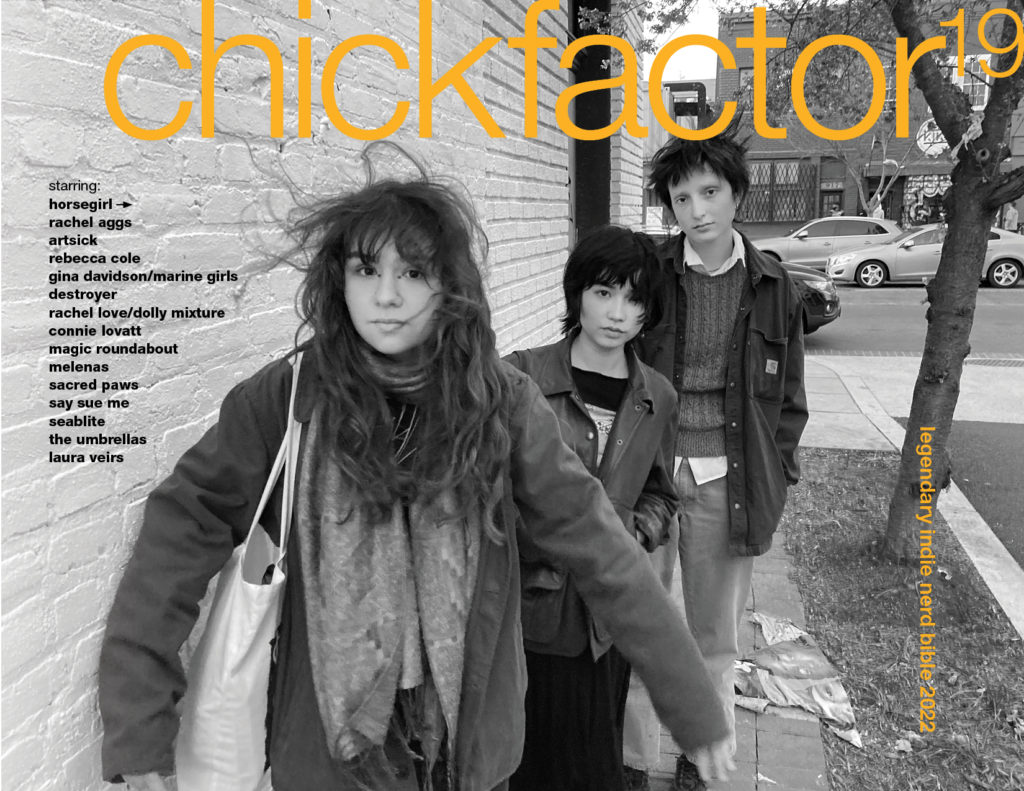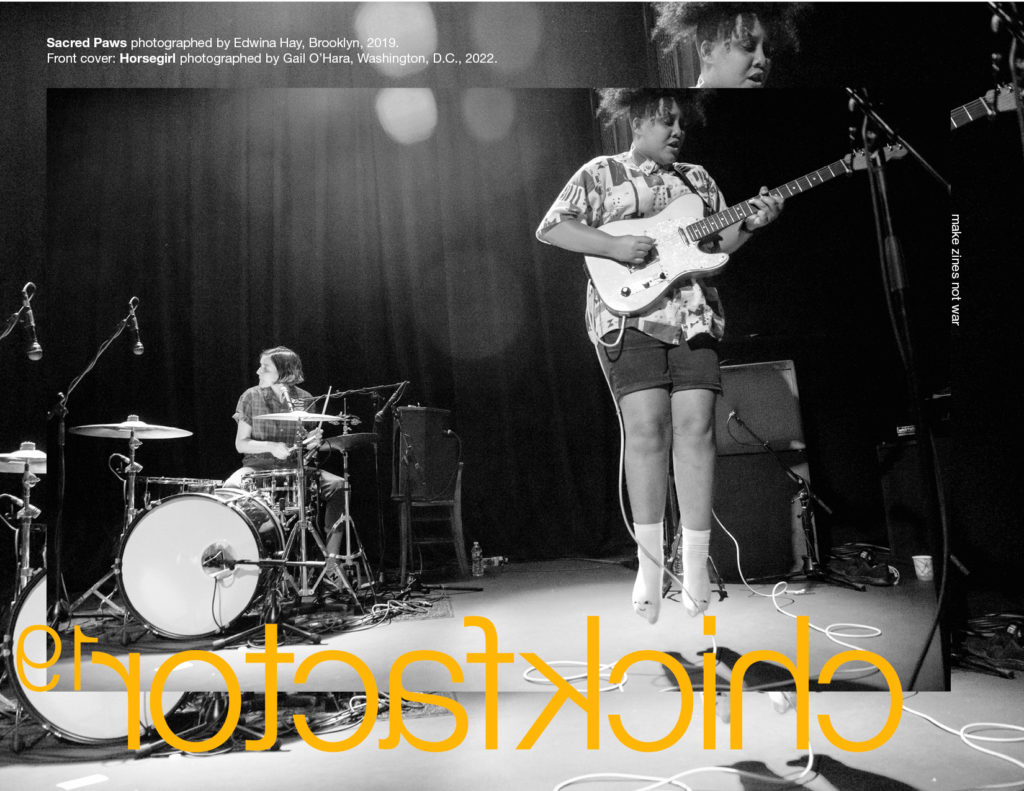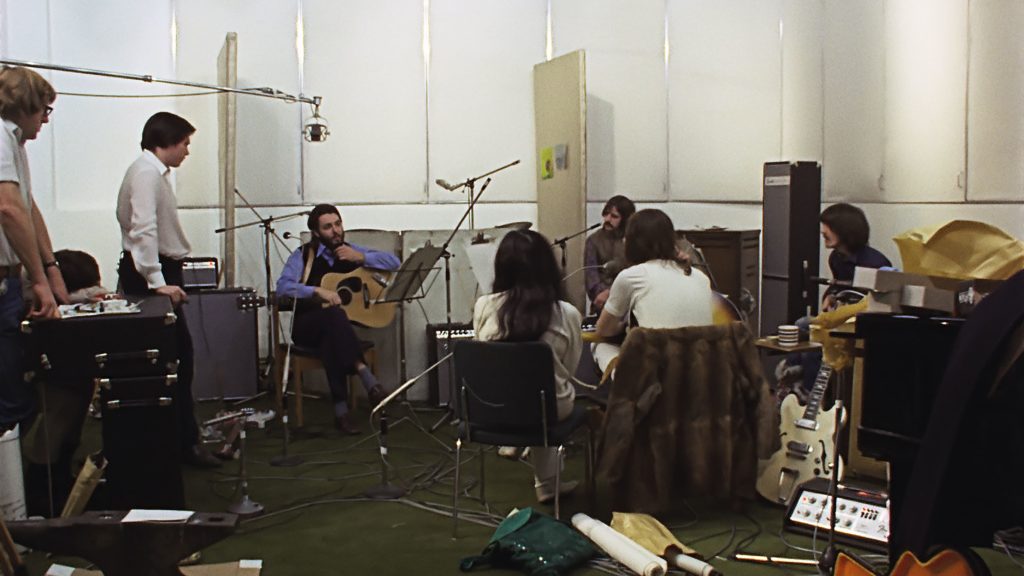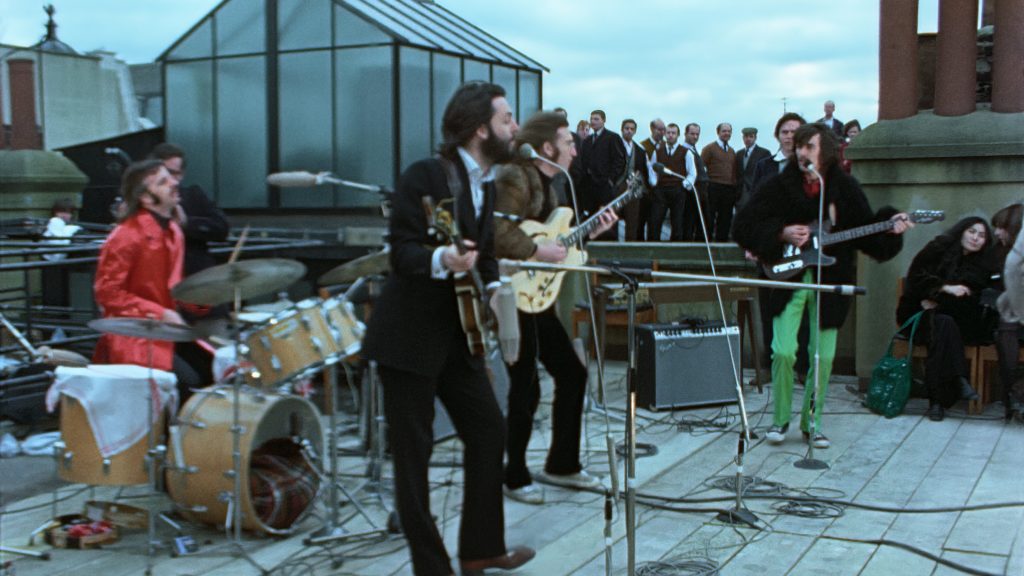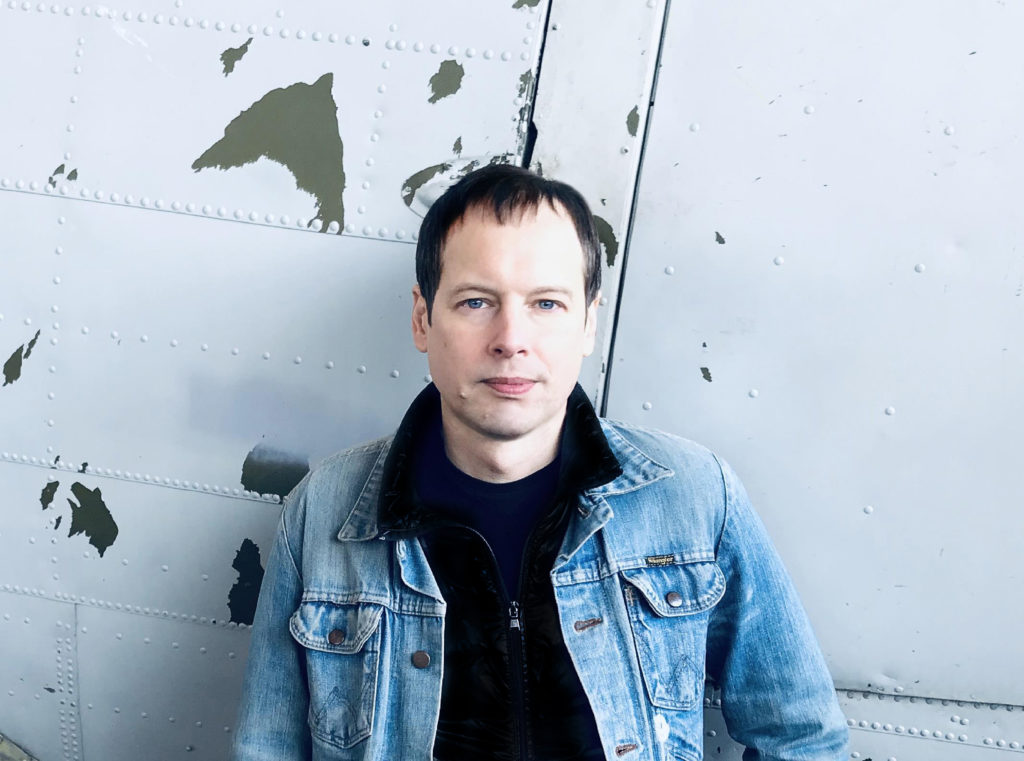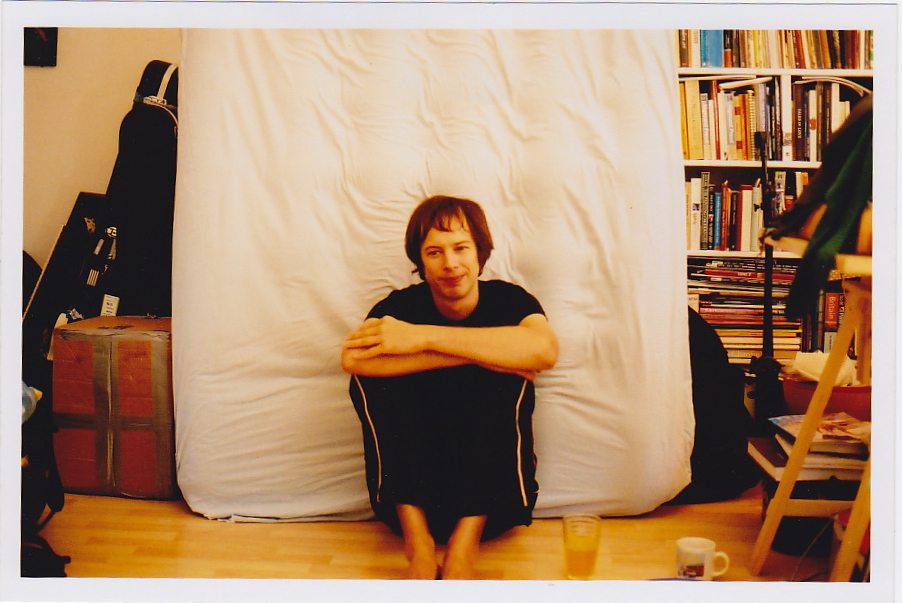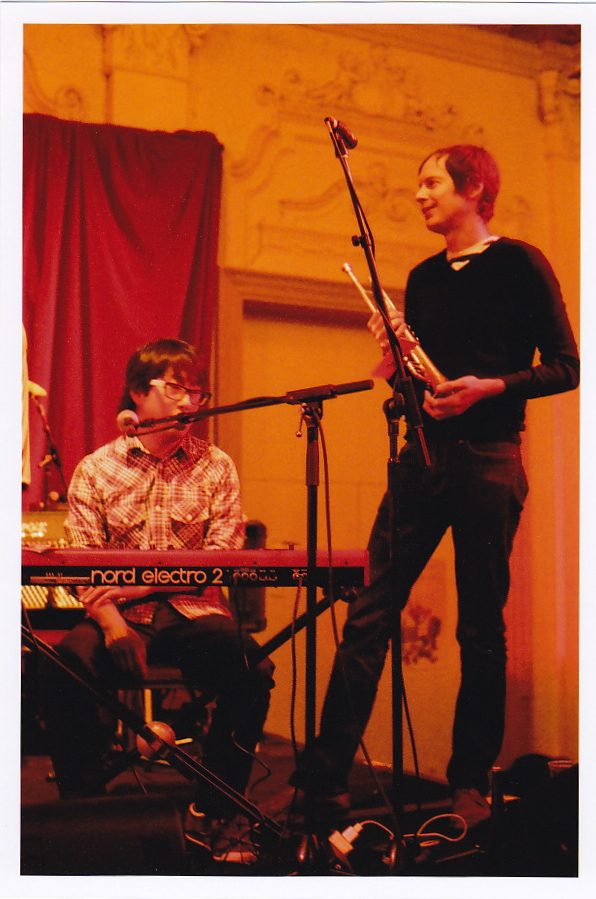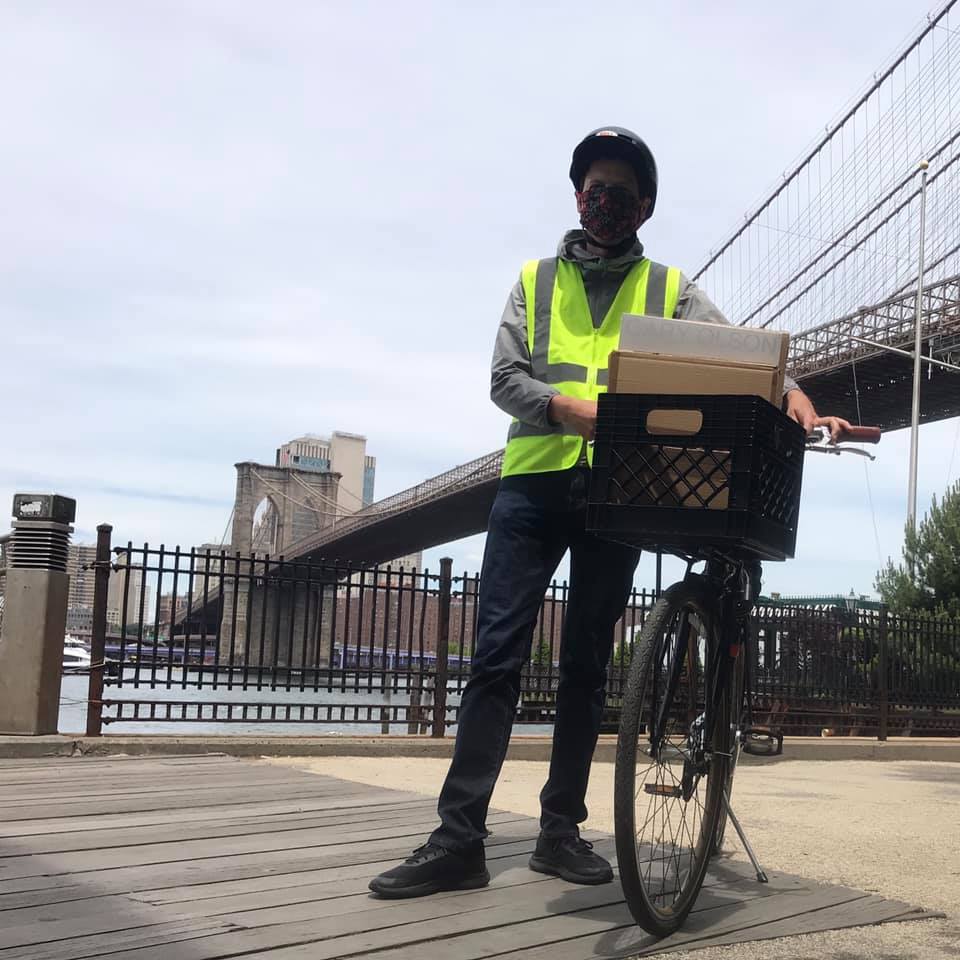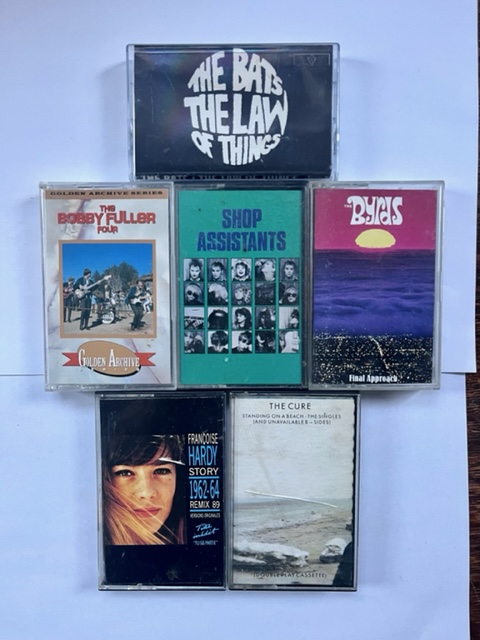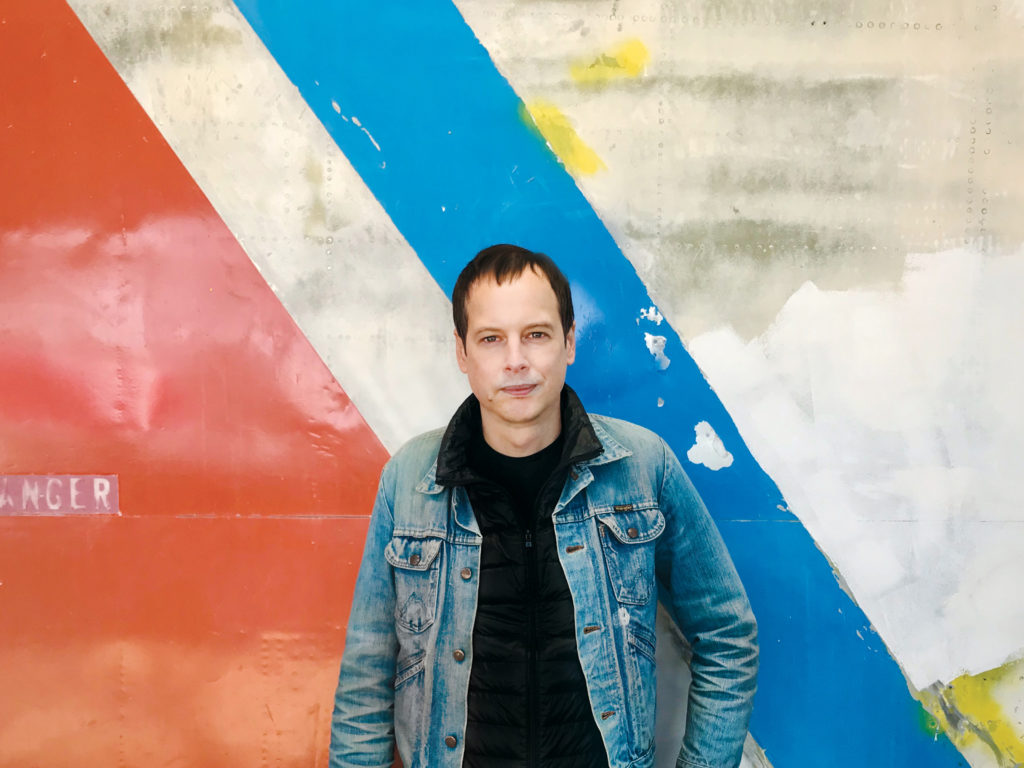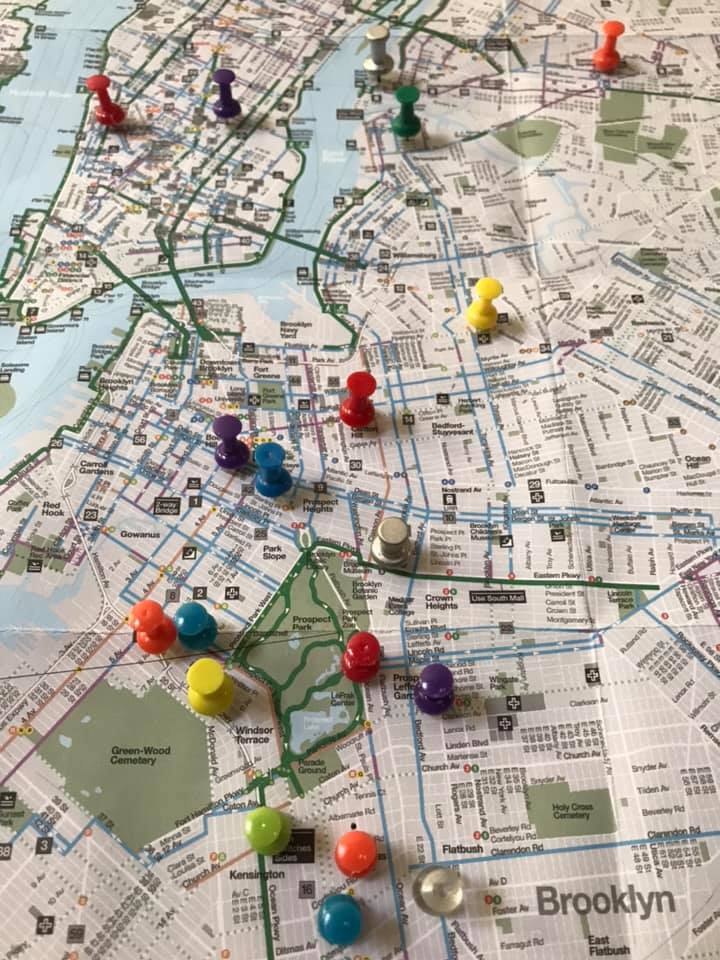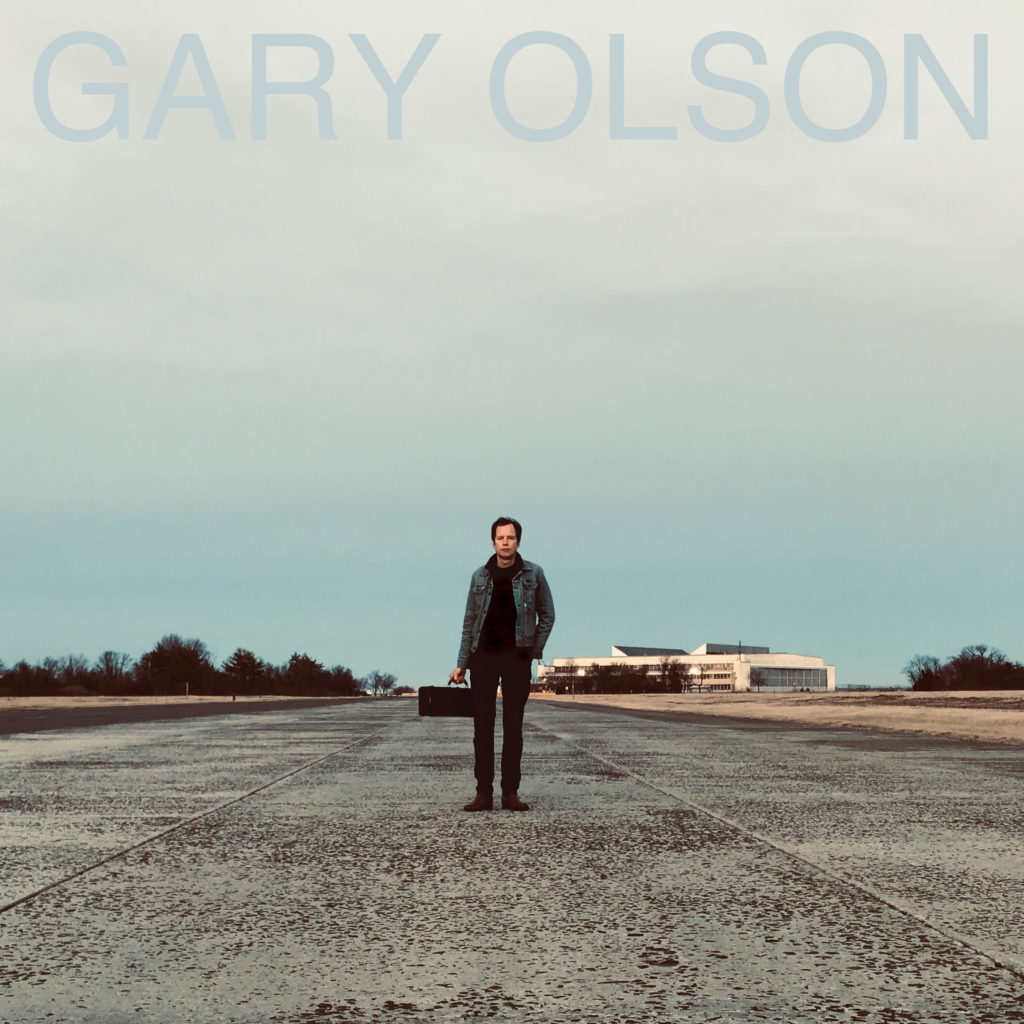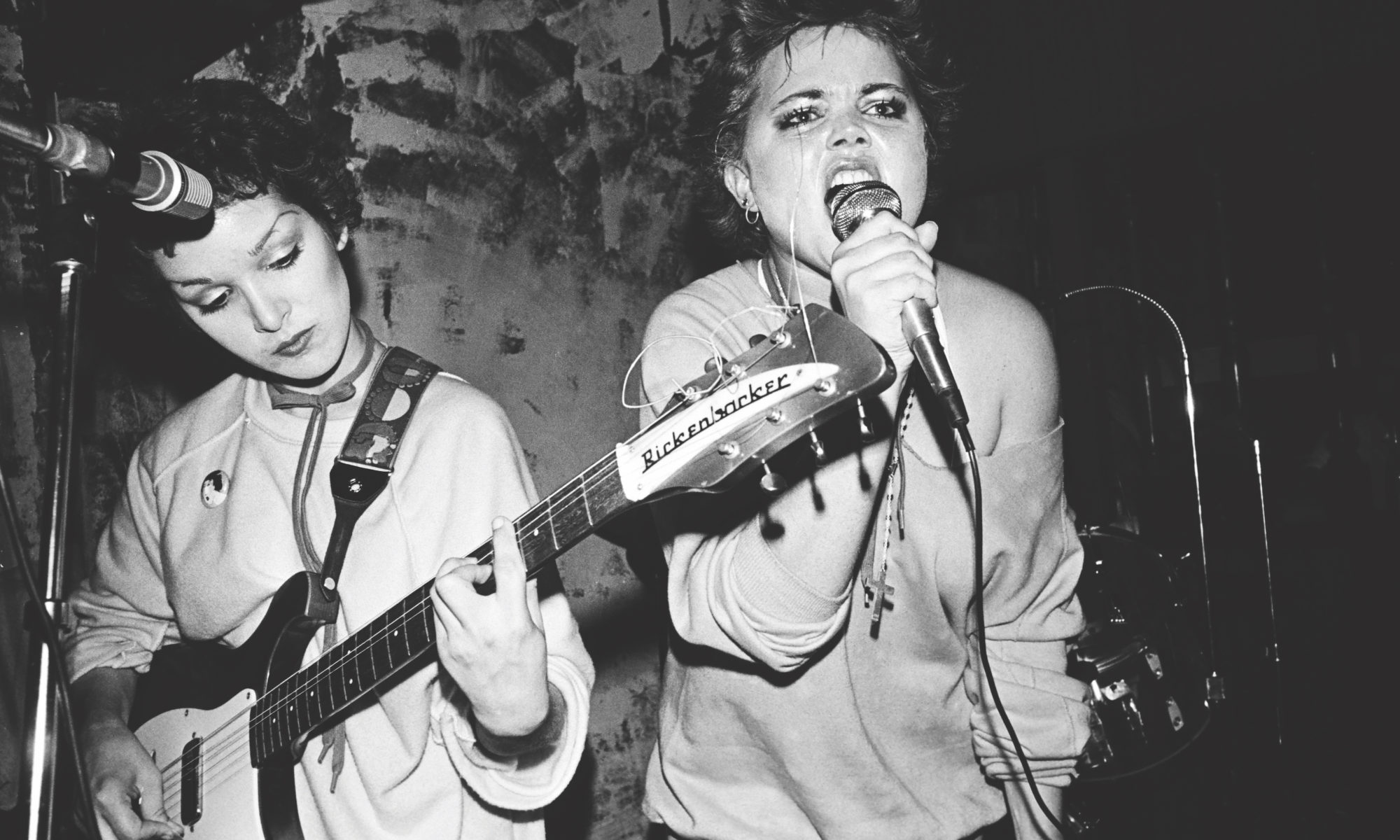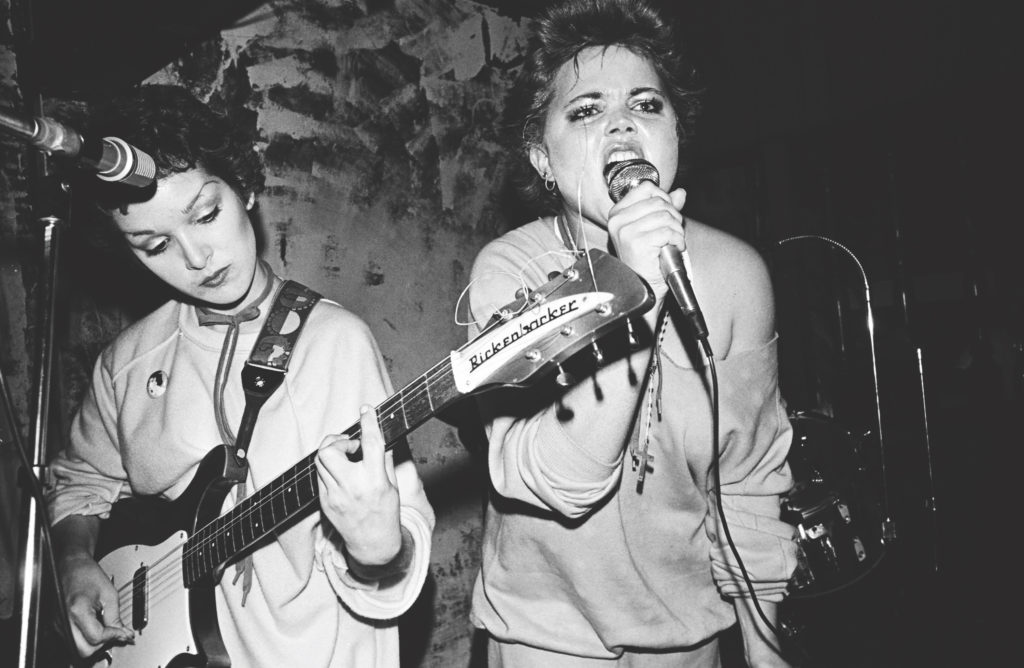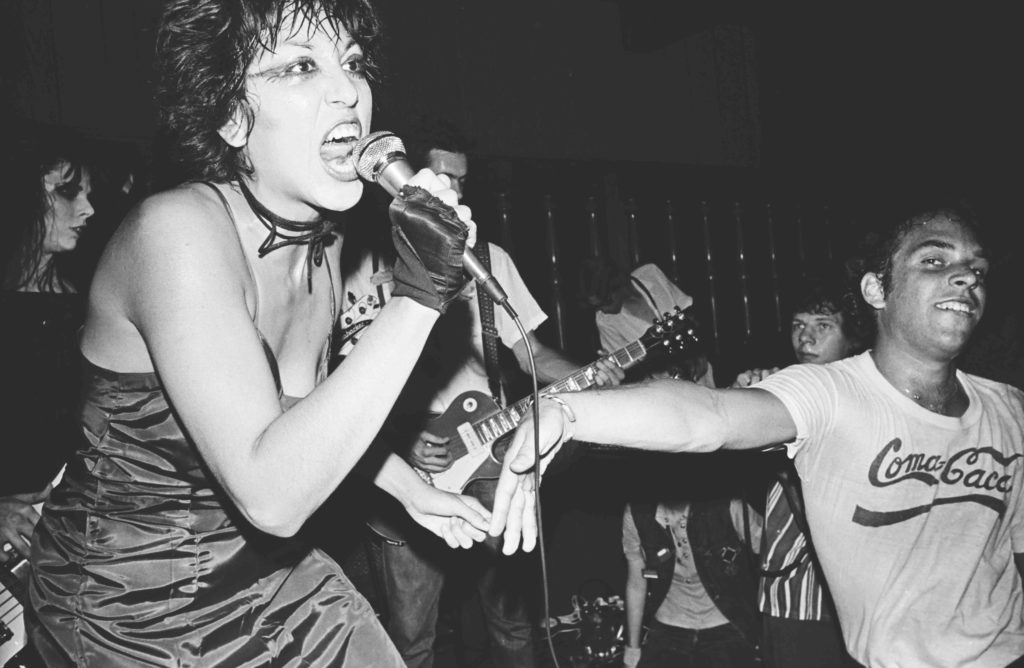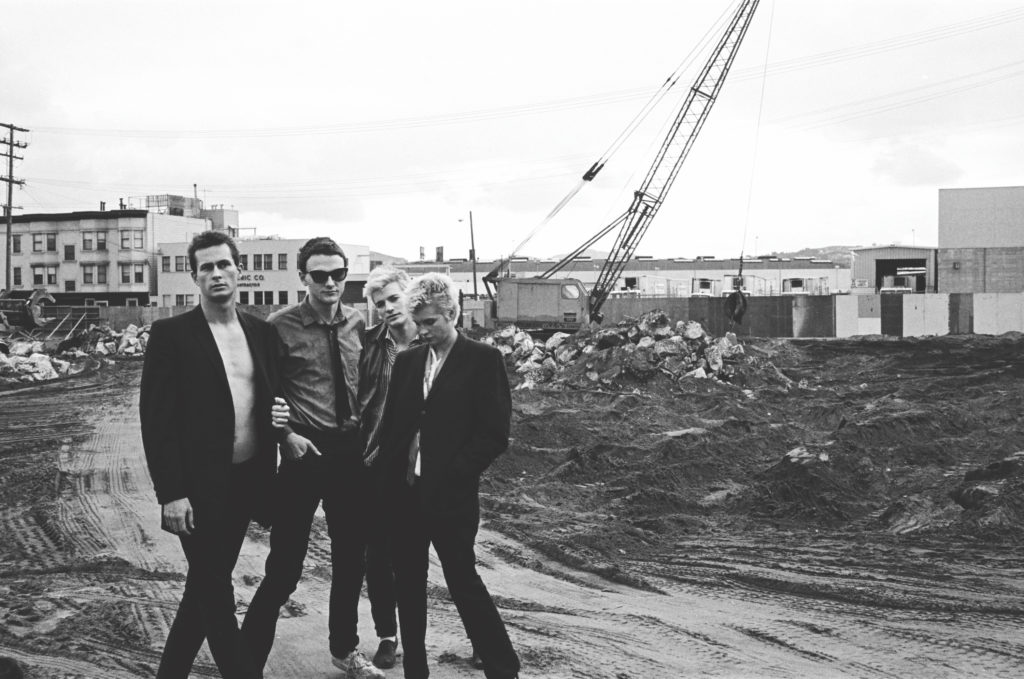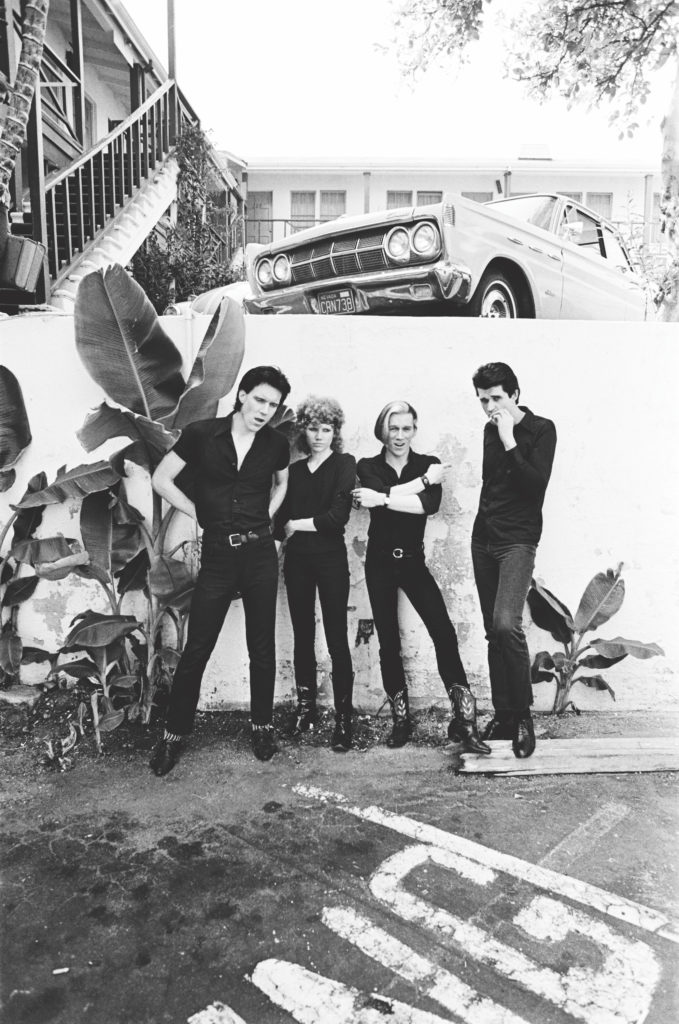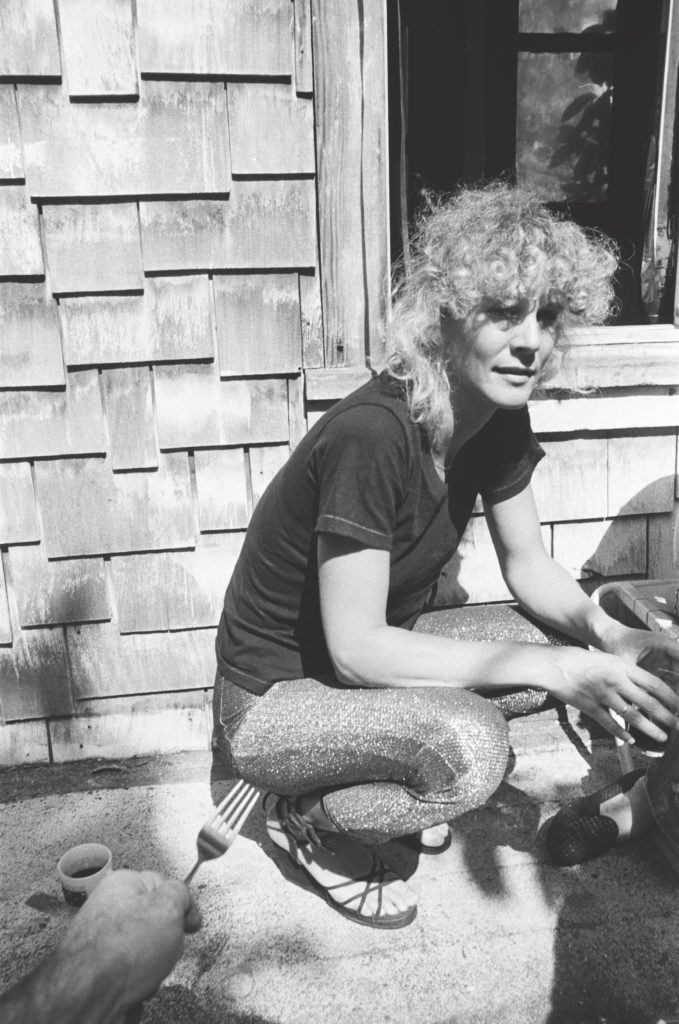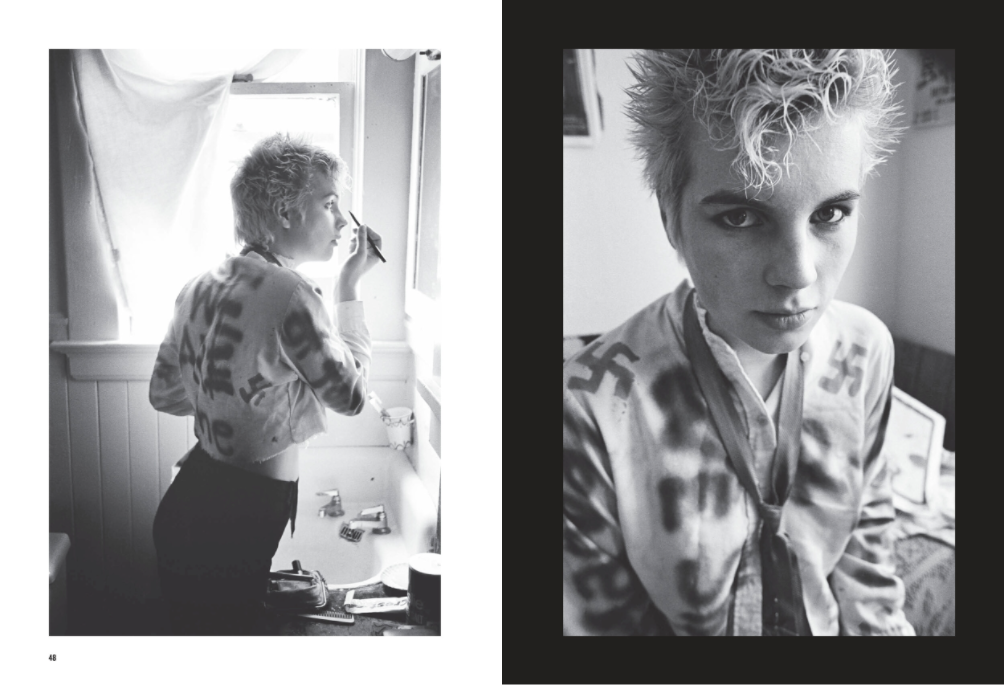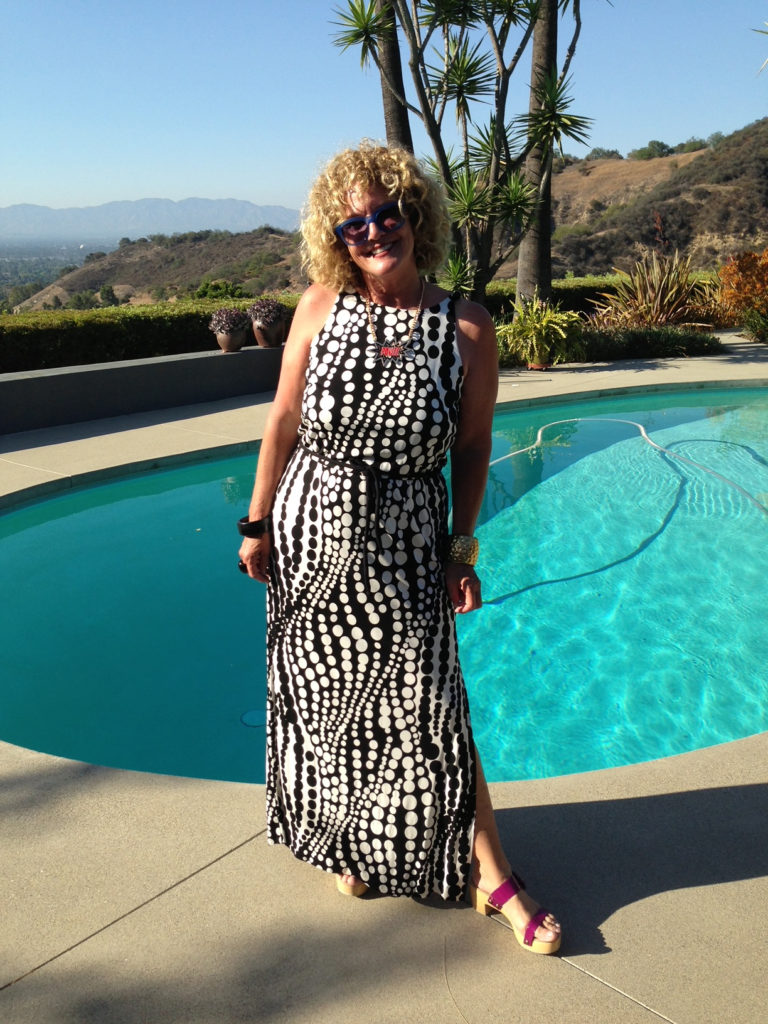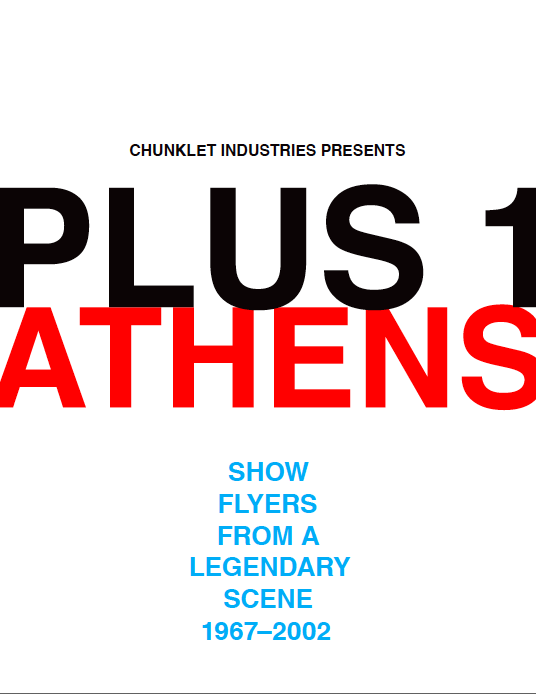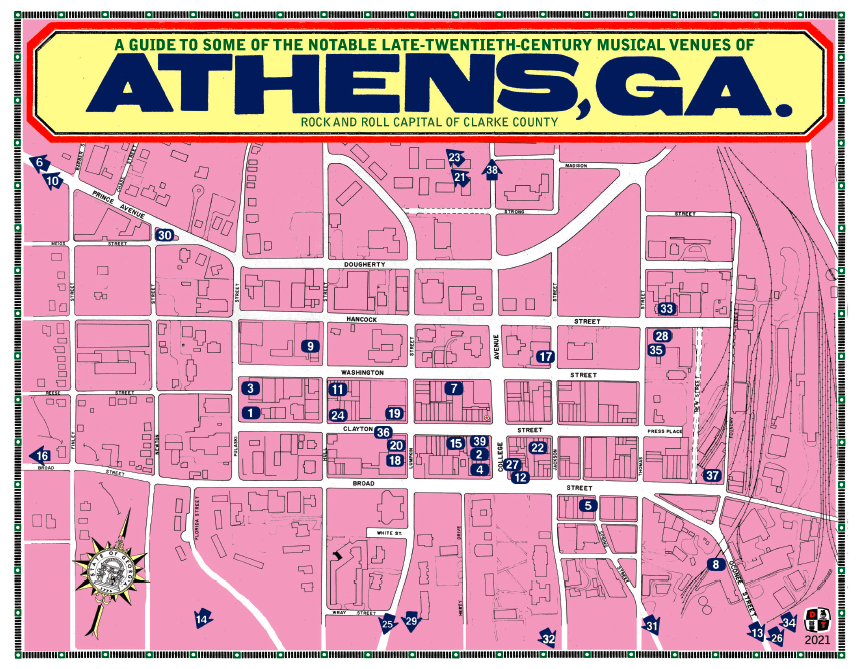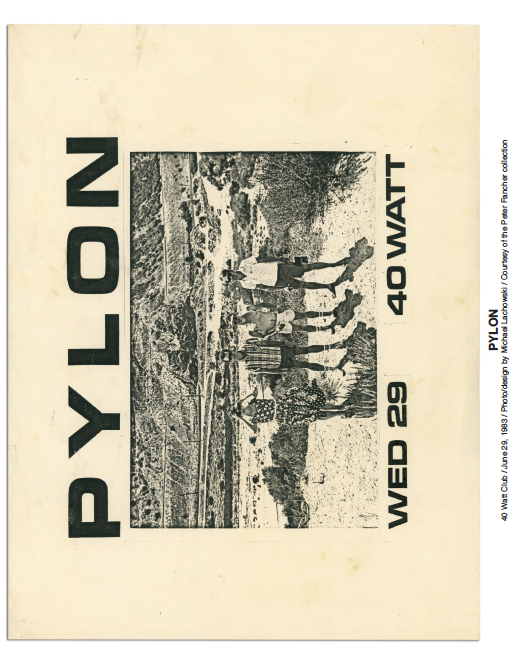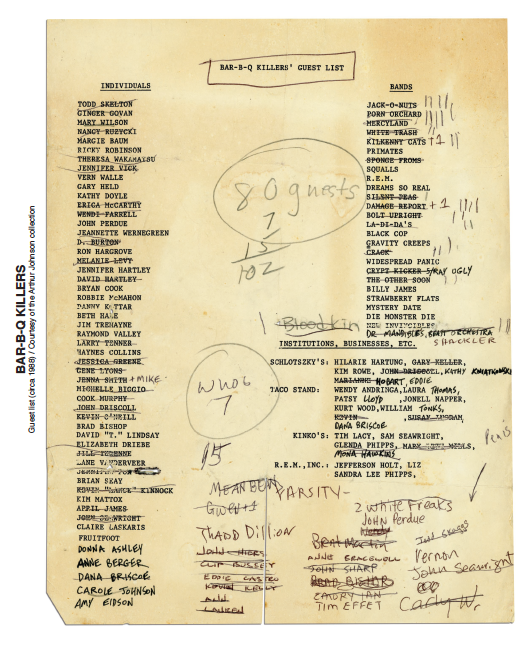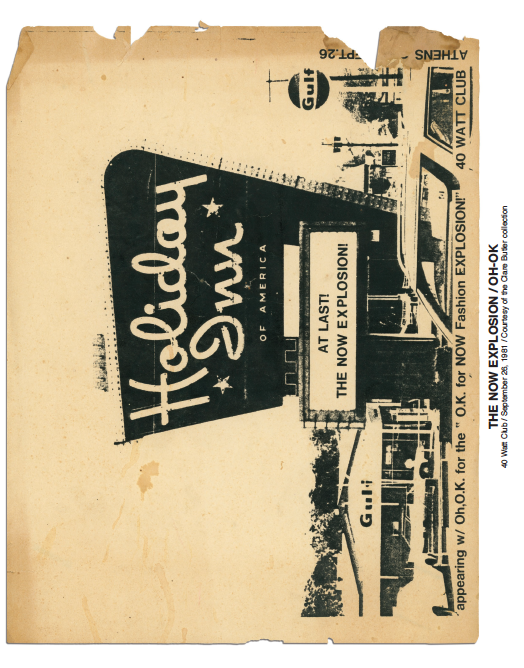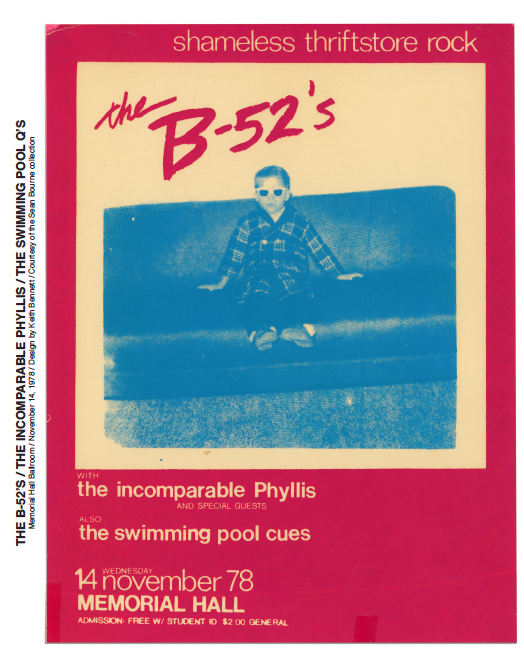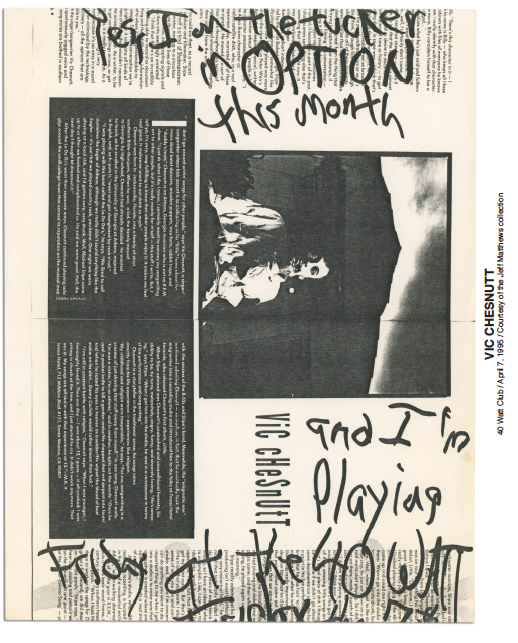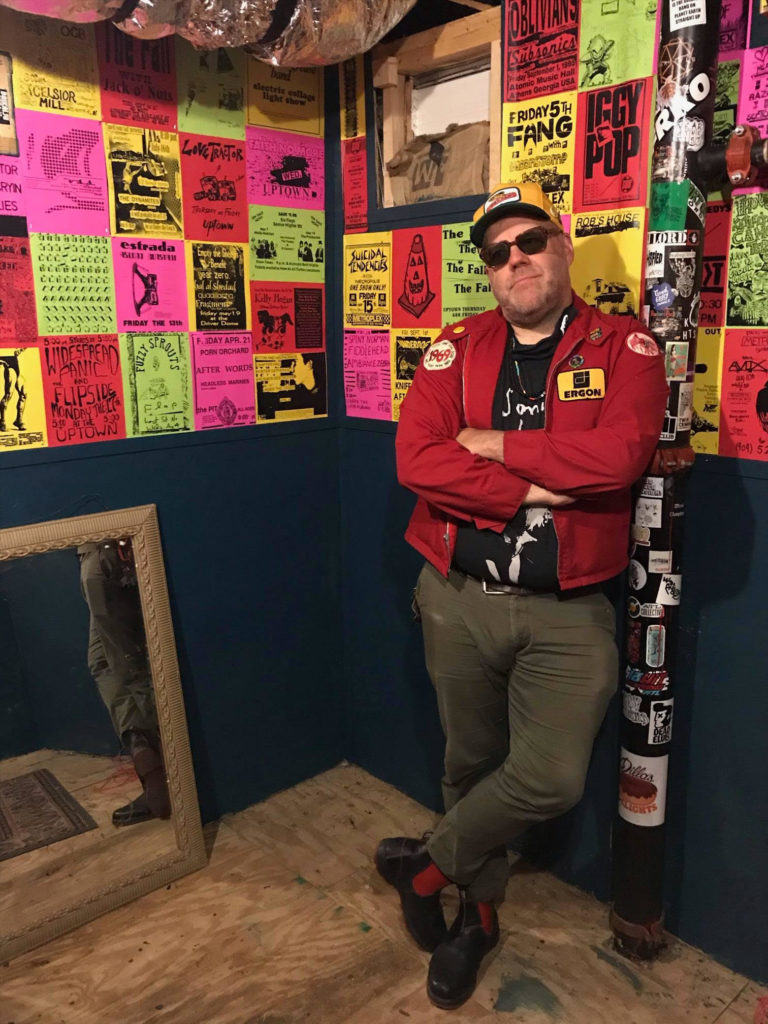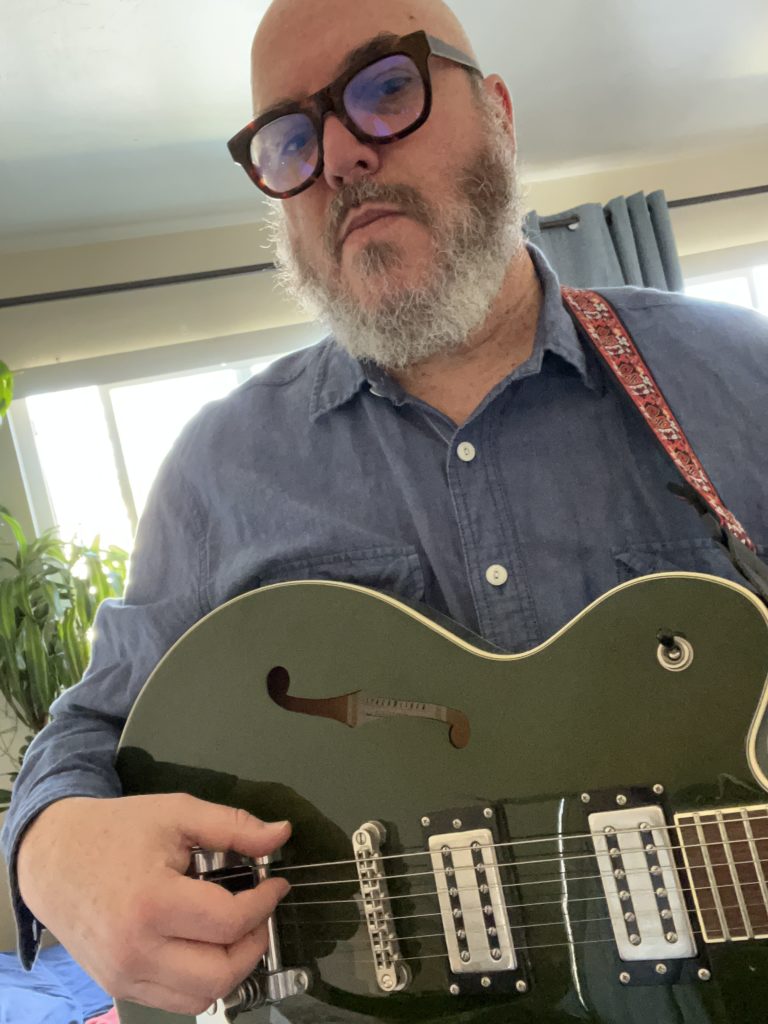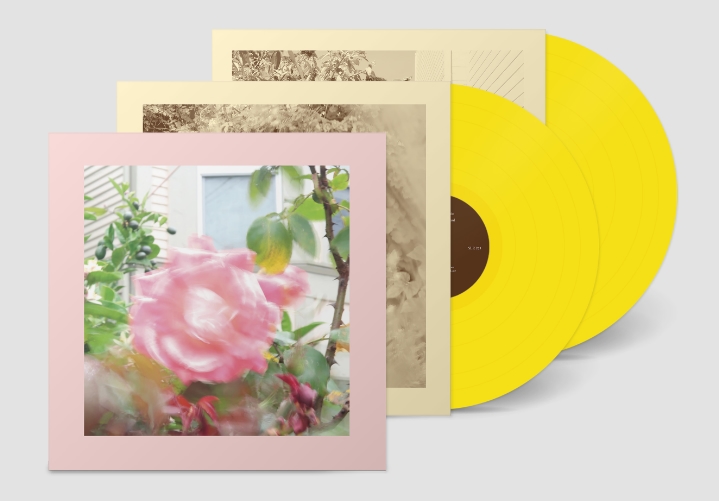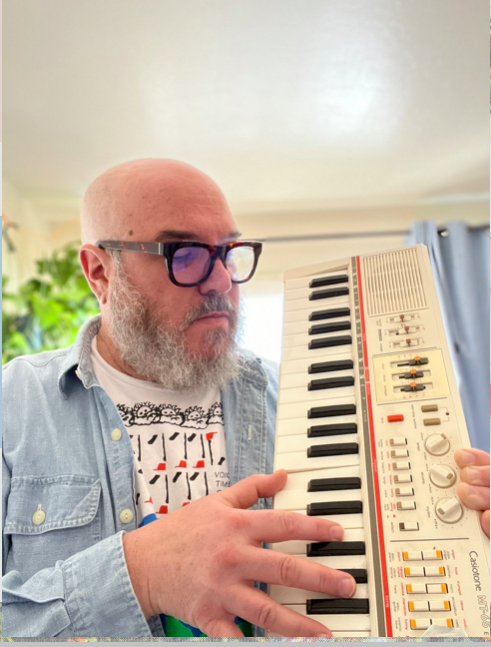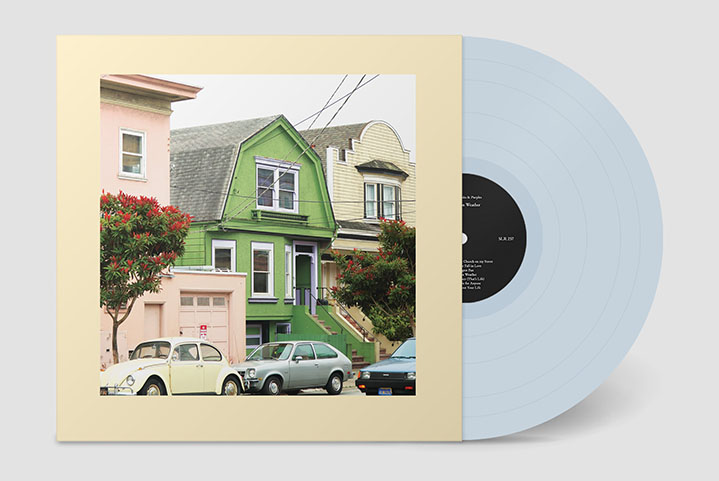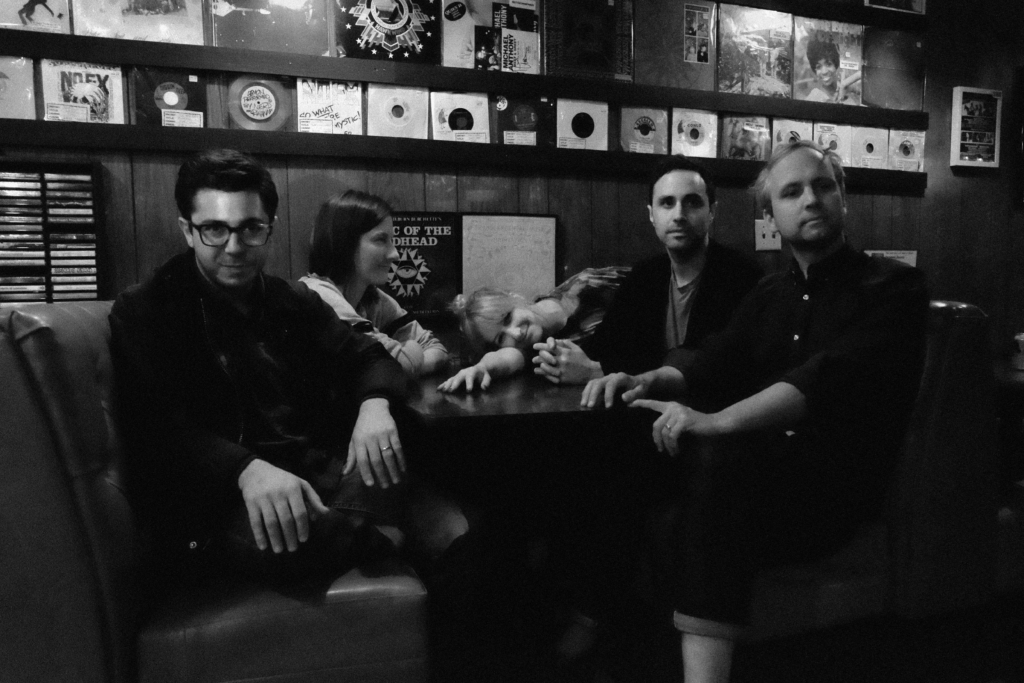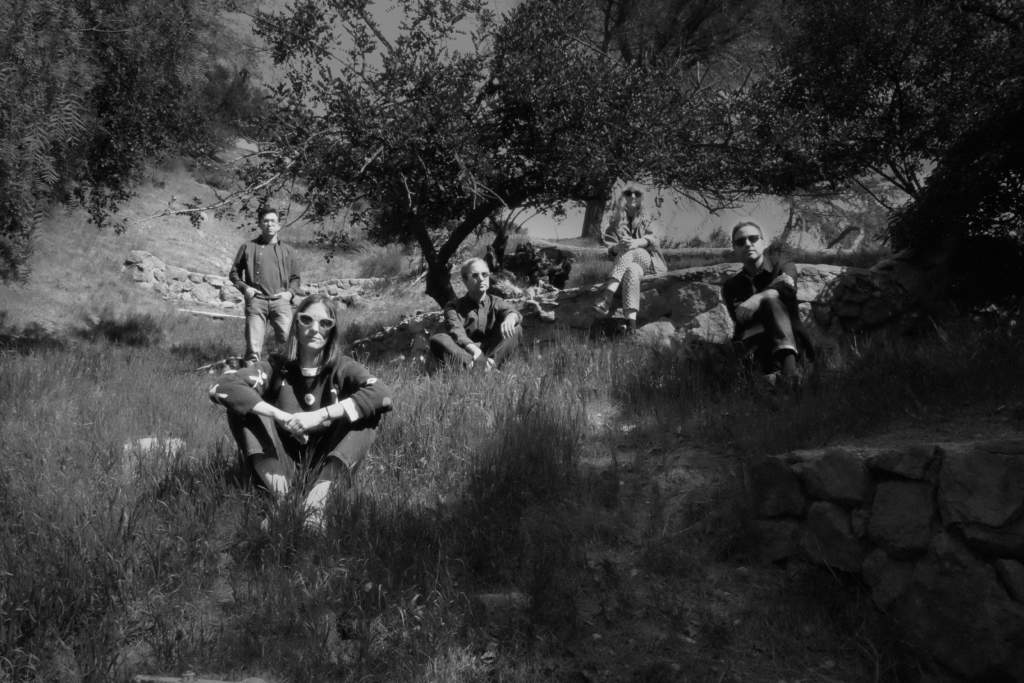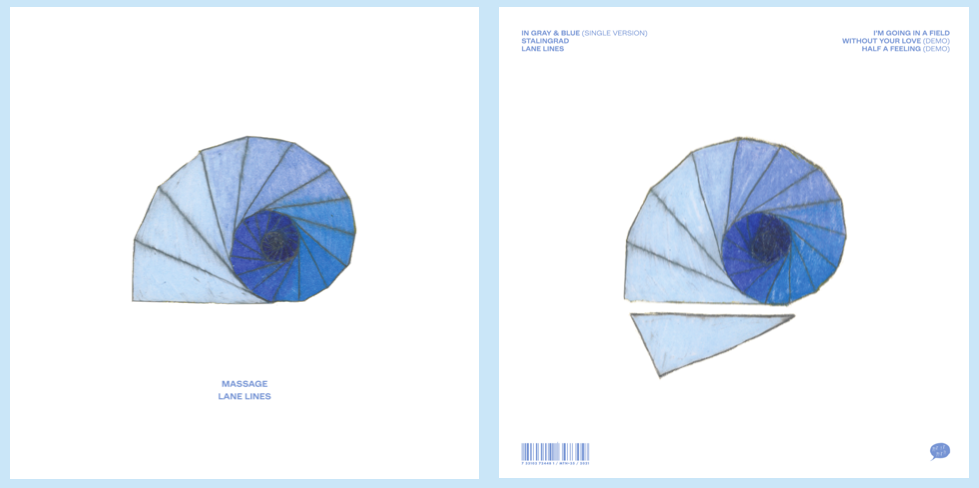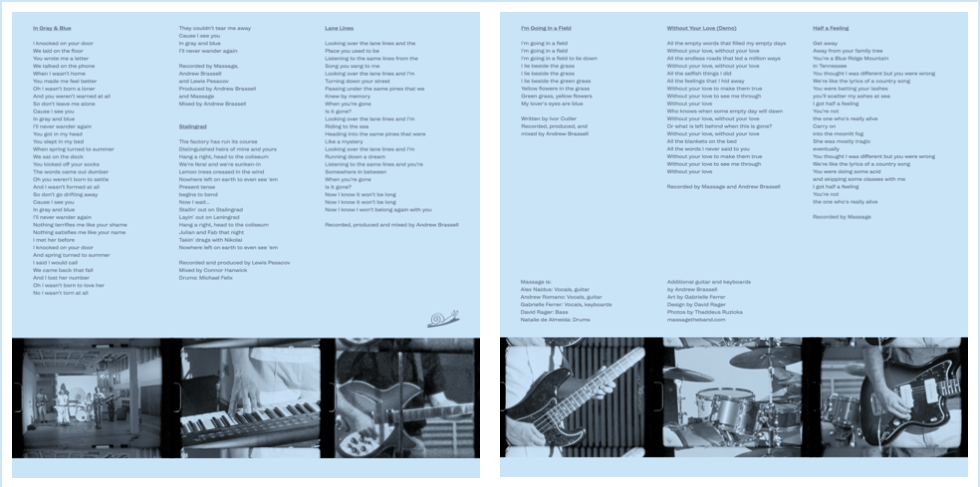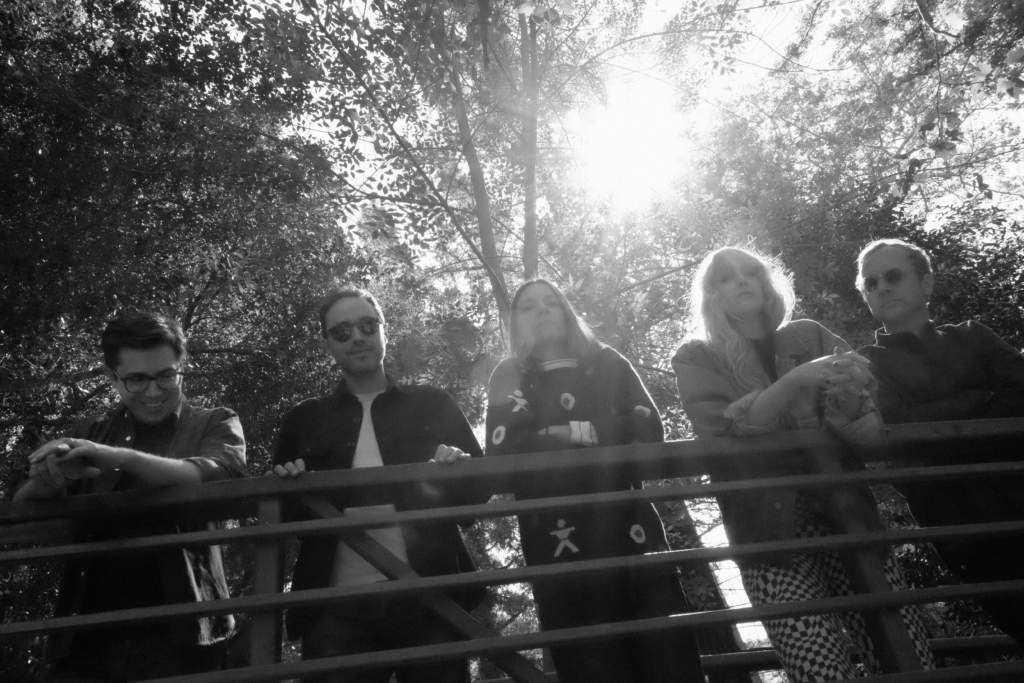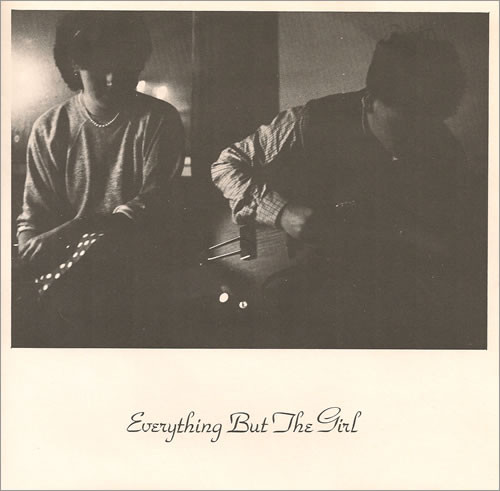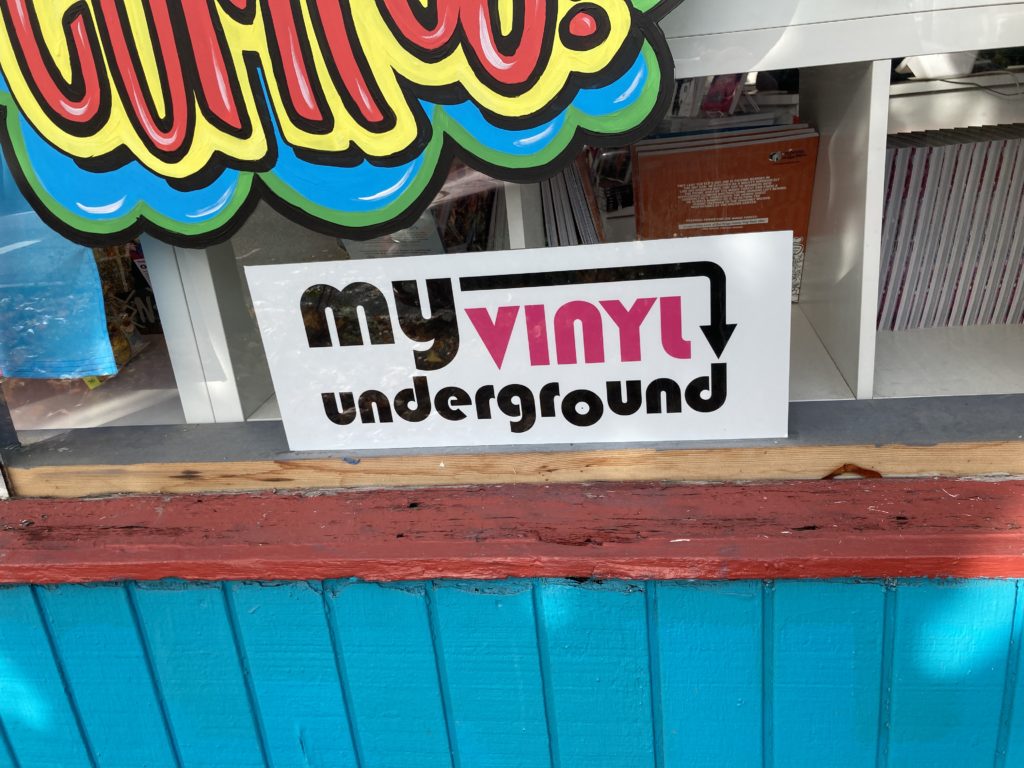
What are your favorite brick-and-mortar record shops, online shops, zine stores, etc.?
Gail CF: My Vinyl Underground and Mississippi in Portland. Dusty Groove. Carolina Soul in Durham. Amoeba.
Daniel Handler (aka Lemony Snicket): Amoeba on Haight, and the unclassifiable section three shelves back at Green Apple Books on Clement.
Beth Arzy (Jetstream Pony): Rough Trade East (London), Monorail Records (Glasgow), Sounds of the Universe (London), Flashback (London), OOR (Zurich), Grammar School Records (Rye), Rollin’ Records (London).
Fred Thomas: I love so many independent shops around the world. I’ve worked at Encore Records in Ann Arbor on and off since 1998 and as recently as yesterday (!!!), Culture Clash in Toledo is such a cool store, Love Garden in Lawrence Kansas, Mississippi and Jackpot in Portland. Hello Records and People’s Records in Detroit. Today Clothing in Ann Arbor is a serious inspiration. MOOG is a synth and music shop in Montreal I used to go into every day and never buy anything at the entire two years I lived there.
Ed Mazzucco / Shelflife Records: My Vinyl Underground. Amoeba SF back in the 2000s.
Kendall Meade / Mascott: Main Street Beat, Nyack, NY.
Theresa Kereakes: In Nashville, where I now live: The Groove (new & used records, gazillions of indie 45s, zines. and stuff); Grimey’s (new & used records, books, zines)—they both host live performances and events. Online, I buy from Rough Trade, because I can’t go to any of their stores in person. Oddly, I’ve never shopped in a zine or comic store, even though I lived basically next door to on in Chelsea (and I would always see my neighbor, Johnny Ramone in there). I buy my zines from record stores (I supposed I like one-stop shopping), and online and from book fairs/art shows where the creator is selling in person.
Stuart Moxham: Bandcamp by miles, but also LSD Records shop in Wilton, Wiltshire and ebay
Alicia Speakeasy Studios: Amoeba is still the best record store in San Francisco. I love it. And now, Bandcamp is my second favorite record store.
Claudia Gonson / The Magnetic Fields: I’m very happy that St Marks Comics moved to Brooklyn. It is near enough to me that I can pop over there fairly regularly. I am not a good music shopper anymore and have not found it easy to navigate through the new record stores I have seen. I do love poking around Brooklyn’s wonderful independent bookstores.
Janice Headley / CF & KEXP: Bandcamp, Patreon, Quimby’s
Tracy Wilson / Turntable Report: I miss Other Music and Steady Sounds so much. Current favorite shops include Uncle Tony’s Donut Shoppe, Acme in WI, and Double Decker in PA.
Pete Paphides: The Record Detective Agency in Palmers Green; Alan’s Record & CD Shop in East Finchley; the Little Record Shop in Hornsey; Monorail in Glasgow; Resident in Brighton; Rough Trade in West London; Easy Listening in Acocks Green, 40 years ago.
What is your favorite record store?
Nancy Novotny: End of an Ear, Austin
Sukhdev Sandhu (CF):
Sound Service, Villingen
For its tragic chanteuses, Bavarian folk music, and the nearby Vietnamese restaurant
Flur, Lisbon
For its natural light, gorgeously-sleeved house 12″s, and mellow staff
An Ideal For Living, Stockholm
For its lesser-known Robert Wyatt singles, early el LPs, Aztec Camera picture discs
Nat, Tokyo
For its 70s Swedish punk 7-inch singles
World of Echo, London
For its name, lovely owners Natalie and Stephen, Tara Clerkin Trio mugs
Monorail, Glasgow
For its giving, generosity, endless geographies
Pianola, Tokyo
For its chamber music, oddsome pop, delicate ardour
Discreet, Gothenburg
For its making, channelling and harvesting of mysterious local circles
Fnac, Cannes
Would that most independent stores were as good as this chain one. It made my Charles Trenet cup overfloweth.
Manic Hedgehog, Oxford
Where I blew my student grant in one go
Alexander Bailey: Winzer Records, Palm Springs
Danny Ingram: Restless Records (Soho, London)
Adam Stafford: Jigsaw/My Vinyl Underground of course. Arroyo Records in LA is good! I picked up a couple of Aislers Set 7-inches there recently.
Brian Musikoff: Sonic Boom Records!
Kevin Coral: Last Exit Records in Kent, Ohio (though I work there so biased) and Current Year Records in Parma, Ohio.
Ken Katkin: Shake It Records in Cincinnati. Historically: Pier Platters R.I.P. and Home of the Hits.
Carmen Mullins: Crookedbeat (D.C.)!
Tim Dagger: Currently, Twist and Shout in Denver.
Matthew Edwards: Swordfish in Birmingham UK. Open Hand Music in Berkeley, CA.
Joey Sweeney: Repo Records in Philly.
Ryan Olson: Amoeba obviously here in L.A. but I like Record Surplus on my side of town.
Peter Momtchiloff: Truck Music Store.
Jen Sbragia (CF, The Softies, All Girl Summer Fun Band): My Vinyl Underground for sure, also there’s a great one in my hometown called the Next Record Store (Santa Rosa, CA, formerly the Last Record Store R.I.P.)
Michael HHBTM Records: My Vinyl Underground / Microgroove / Grimey’s / Wall of Sound / Green Noise / Raven / Vintage Vinyl
Yvette Ray: Rotate This in Toronto
Bx Blackhawk: Bandcamp
Reuben Radding (photographer): Academy!
David Martin: Government Center in Pittsburgh, Landlocked in Bloomington IN, Love Garden in Lawrence KS, Lunchbox in Charlotte NC, Tone Deaf in Chicago, End of an Ear in Austin
Hannah, @BowlieBlue: Relevant Record Café, Cambridge UK. no inflated prices (and even a student discount!), great vibes, cafe above the shop, amazing variety and seriously lovely staff
Tracy Dreamy Records: Before London, I used to go to a place called Black Hole in Brea, CA. I think it’s still there. There were some equally good places in San Diego and Lou’s Records was always worth the drive. Obv Amoeba in SF. In London: Sister Ray… but also the record & tape exchange was ace.
Jason Summershine Records: Going Underground in Bakersfield always stellar. Plus, also one here in L.A. too. Points also to Gimme Gimme, Freakbeat & Record Safari in L.A.
Patrick Carmosino: Discounting ones I’ve worked at, I’d have to say currently – Rebel Rouser in Bklyn, organization and non-Discogs-price-gouging a big +. In a perfect world, it should’ve been the one Chris V. was running on West 8th for a short time but alas…
Keith @anxietyblock: Feeding Tube Records in Northampton, MA. Lots of hard to find gems, specializing in Ptolemaic Terrascope type bands. Owner started the store because his kids weren’t interested in inheriting his very impressive collection.
Leela Corman: Armageddon and Analog Underground in Providence, RI; In Your Ear in Warren RI – the one by the water.
Adam Grimord-Isham: I’ll second Flat Black and Circular and Mississippi, will add Reckless in Chicago and Moon Rocks in Eugene. Specks in PDX is a little but great store!
Mark Woodpigeon: Atom Heart in Montreal always makes me happy.
Robert Hindle-Yang: Records The Good Kind (Vernon, CT)
Ben Parrish: In Portland: Mississippi Records, My Vinyl Underground. Olympia: Rainy Day Records. Denver: Twist & Shout
Don Clark: Celebrated Summer here in Baltimore.
The Catenary Wires: Wow and Flutter in Hastings, UK.
Linda Smith: Normal Books in Baltimore.
Jon Freer Sounds: Gothenburg, Sweden: Discreet Music. Manchester, UK: Vinyl Exchange, Piccadilly Recs
Chelsey Johnson: Black Hills Vinyl in Rapid City, SD! Also love Steady Sounds in Richmond.
Bowery Ballroom: Record Grouch / CrookedBeat DC / Joint Custody DC
Lys Guillorn: In CT: Willimantic Records, Gerosa Records
Rob Ferguson: Jack’s (Red Bank, NJ). Princeton Record Exchange
Stephen Pierce: Electric Eye in Florence, MA.
Leo Lopez: Oakland Ca.: Econo Jam and 1-2-3-4 Go! are really special. Stranded is good too.
Chris Jude: Harvest Records in Asheville, NC
Warsaw Cubicle: Lunchbox Records here in Charlotte!
Cheesepolice (Twitter name): In Your Ear Boston
Chelsie Dever: Friends of Sound
Can’t Hardly Wait: Dr. Disc, Windsor, ON
Domigon (Twitter name): Rare Groove in Osaka
Jesse Kevon: End of an Ear
Elevator Bath: End of an Ear
Bodega Pop: Record Grouch here in Brooklyn; Mississippi Records in Portland, Oregon
Stupefaction Music: Currently: Rocket No. 9 in Kingston, NY
Libby Cudmore: Reimagine Records; Music & More. Both in New Hartford, NY. Both run by the coolest, sweetest, most thoughtful fans in the world.
Ryan Daly: Pitchfork Records in Concord, NH, and Mile Long Records in Wheaton, Illinois.
Ami_59x (Twitter name): Zia Records and Stinkweeds in Phoenix
Astral Swans: Recordland Calgary
Laura Fenwick: No contest, Grimey’s.
Cheshire Adams: Nashville: Grimey’s. Chicagoland: Vintage Vinyl Evanston, Reckless, Laurie’s Planet of Sound.
Ben Tye: These two keep on extending my retirement age: Honest Jons LDN and World of Echo Shop.
Julie Underwood: Love Garden Sound in Lawrence, KS
Slow Season: Forever Young in Prairie, TX, and Permanent Records in L.A.
Black Mesa Records: Guestroom Records in Norman or OKC
Julie Butterfield: Sonic Boom / Seattle and Gre Coffeehouse and Vinyl / Palm Springs
Danny Ethridge: Waterloo in Austin; Grimey’s in Nashville
Albert Rolls: Music Town
